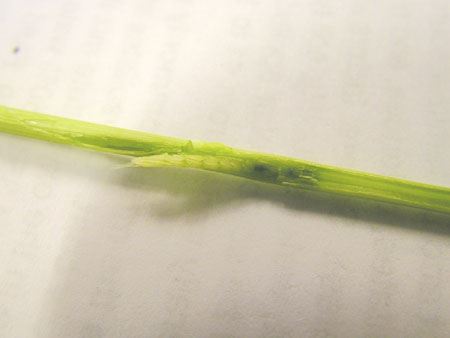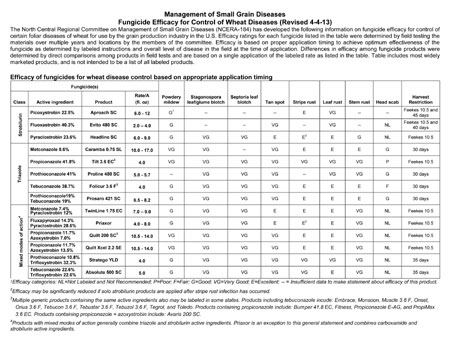Wheat Development: Finally Progressing
DR. ANTHONY OHMES
JACKSON, MO.
Wheat stem elongation phase of development is progressing. Below is a photo of a wheat head above first node (Feekes 6). Running over wheat, grazing and auxin (Group 4) herbicides can injury the growing point at this stage and beyond. Some areas of our region are probably in second node (Feekes 7) which will develop approximately one week after Feekes 6 followed closely by a third node to which flag leaf emergence (Feekes 8) will begin. The flag leaf is the last leaf to emerge in wheat development and contributes approximately 75 percent of photosynthate needed for maximum grain yield. Scouting and managing for disease and insect damage is critical at this stage of development through flowering (Feekes 10.51). Flowering begins approximately 3 -5 days after head emergence and is the only timing for suppression of scab (Fusarium head blight) with labeled fungicides.

Wheat head above first node (Feekes 6).

Corn Nitrogen Management
Feeding corn when it needs it spreads your risk. The properties of nitrogen lend it to potential loss from leaching, volatizing and/or denitrifying. This instability will vary with soil properties such as CEC (Cation Exchange Capacity) and OM (Organic Matter) and greatly influenced by rainfall. Nitrogen holding capacity will vary with these two soil properties and we cannot predict the exact weather pattern for the season even if your soil could hold all possible nitrogen. Peter Scharf presented his research on nitrogen timing at the 2013 Regional Corn Meeting (http://extension.missouri.edu/scott/agriculturalpresentations.aspx). The take home message from his presentation was corn nitrogen should be available at the time of greatest need and that timing is not preplant. The timing of greatest response is once corn enters rapid elongation (V6) through early reproductive stages. Actual percentage of nitrogen utilized by developing corn from VE to V5 (first month of development) is very small in respect to the rapid growth period that follows. Splitting nitrogen spreads risk and enables one to make adjustments as the season progresses to account for weather. Avoid applying more than 1/3 of total N for yield goal as a preplant or pre application. Some may be able to get by with more than this upfront but are at a higher risk of applying more nitrogen for the season. All corn will need to continue to be evaluated as it develops, if weather is conducive for in season nitrogen loss and corn is showing signs of nitrogen stress, a late season application (up to R2) may be necessary.∆
DR. ANTHONY OHMES: Agronomy Specialist, University of Missouri